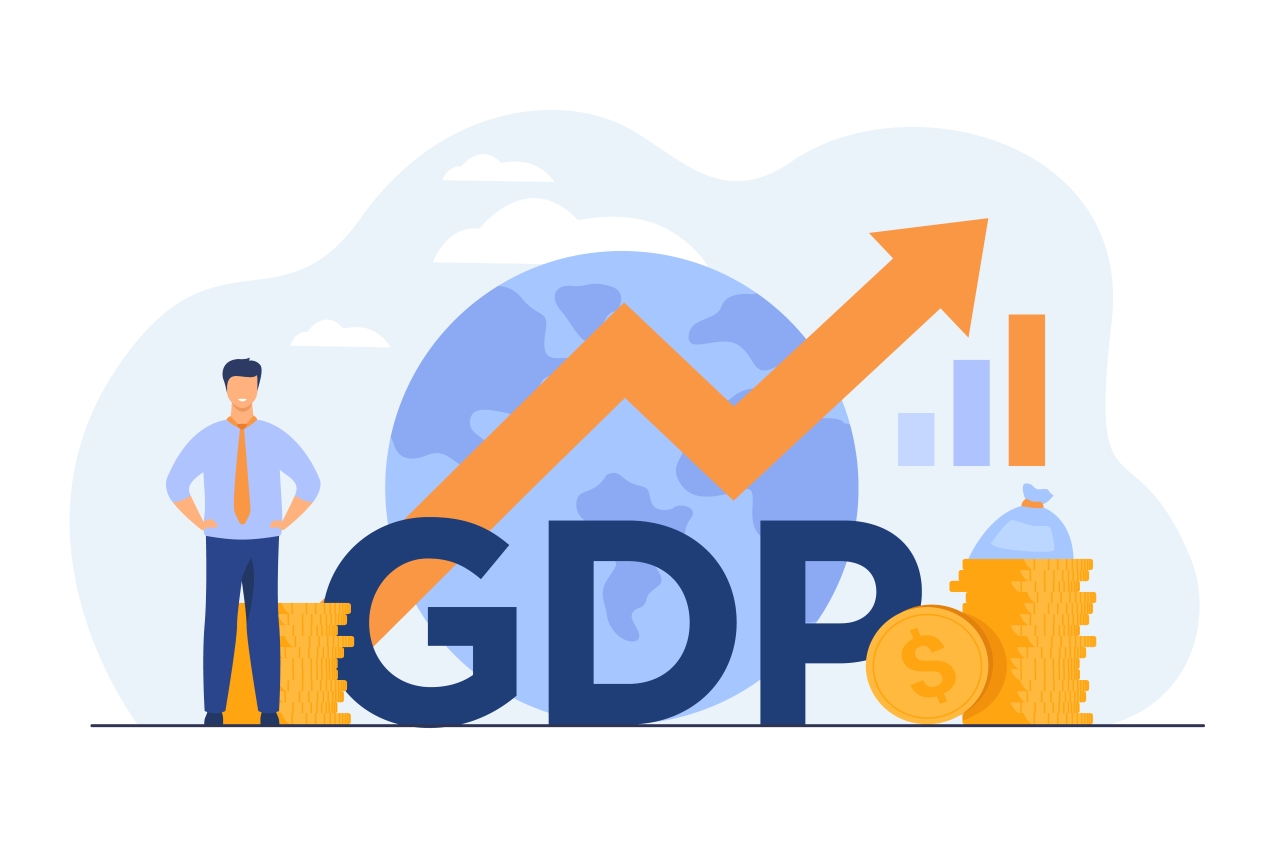
Aggregate Price Level
Stability, signals, and strategy — why understanding the aggregate price level is essential for long-term financial decisions
The aggregate price level — the average of prices across all goods and services in an economy — is more than just a number used in economic reports. It is a vital metric that influences central bank policy, shapes consumer behavior, and underpins the strategic decisions investors make to protect and grow their wealth. It reflects the economy’s overall price environment and signals the broader health of purchasing power.
When price levels rise too fast, inflation eats away at savings, distorts investments, and triggers reactive monetary policy. When they fall, deflation can stall economic growth and erode confidence. Navigating this dynamic is essential not only for policymakers but for individuals seeking to plan retirement, allocate assets, or manage intergenerational wealth.
Understanding the forces behind the aggregate price level — and how it connects to interest rates, real returns, and market confidence — allows investors and families to act with foresight rather than react in uncertainty. In an age of volatile markets and shifting monetary regimes, this often overlooked metric holds the key to financial clarity.
In financial conversations, discussions about inflation, purchasing power, or central bank targets often dominate headlines. But underpinning these themes is a less frequently examined concept: the aggregate price level. This simple yet powerful measure provides a broad snapshot of what’s happening to prices in the economy at large — across industries, sectors, and regions.
Unlike the price of a specific item or a stock market index, the aggregate price level isn’t about one asset or good. It represents the average level of all prices in an economy, distilled into a composite number that tells us whether things are generally getting more expensive, cheaper, or staying relatively stable.
Yet, despite its foundational nature, the aggregate price level is often misunderstood or underestimated. It’s seen as an abstract figure, disconnected from daily life. In reality, it’s anything but. It shapes your mortgage rate. It affects the returns on your savings. It guides policy decisions that ripple through equity and bond markets. And it informs whether the money you’ve saved today will serve you equally well tomorrow.
Understanding the aggregate price level means seeing the economy as a whole system. It means recognizing how a shift in one area — energy prices, wage growth, currency fluctuations — can trigger broader movements in value. And in doing so, it becomes clear why this measure deserves a permanent seat at the table in every financial planning conversation.
What Is the Aggregate Price Level?
The aggregate price level is the weighted average of prices across the economy at a specific point in time. It includes everything from food and housing to healthcare, transportation, education, and beyond. By tracking how this average changes over time, economists assess whether an economy is experiencing inflation, deflation, or price stability.
Unlike individual prices, which fluctuate constantly based on supply and demand, the aggregate price level smooths out these variations to provide a holistic view. This is what allows central banks to compare one period to another and measure real economic growth — adjusting for price changes rather than nominal increases.
Common indices used to represent the aggregate price level include the Consumer Price Index (CPI), the Producer Price Index (PPI), and the GDP deflator. Each has its own methodology and focus, but all aim to give insight into the direction and speed of price changes on a national scale.
Importantly, the aggregate price level also plays a critical role in determining real versus nominal values. While your income might rise in euros or dollars, the real value — what it can buy — depends entirely on how the aggregate price level evolves over time. It’s the difference between feeling richer and actually being richer.
Why the Aggregate Price Level Matters
At its core, the aggregate price level is about purchasing power. If average prices rise but your income remains constant, your ability to afford goods and services declines. Conversely, if prices stay stable while your earnings grow, your purchasing power improves.
For central banks, maintaining a stable aggregate price level is a key objective. It’s why inflation targets — usually around 2% in developed economies — are central to monetary policy. A modest, predictable increase in the price level encourages spending and investment. But instability — in either direction — can erode confidence and distort financial decisions.
For long-term investors, changes in the aggregate price level impact real returns. A bond yielding 4% in a 3% inflation environment produces a 1% real return. But if the aggregate price level rises sharply and inflation hits 5%, that same bond produces a negative real return. The same logic applies to wages, pensions, and portfolio income.
This is also why asset allocation strategies often include hedges against inflation — such as equities, commodities, or real assets — and why investment models incorporate real rather than nominal variables when projecting future cash flows.
Beyond investment, the aggregate price level influences taxation, interest rates, and even social policies. Brackets in tax codes may be adjusted for inflation to avoid bracket creep. Social programs and pension payouts are often indexed to price levels to protect beneficiaries. Every corner of the economy, in some way, is touched by this one metric.
Forces That Drive Changes in the Aggregate Price Level
The aggregate price level doesn’t move randomly. It is shaped by a variety of forces — some short-term, others structural. Among the most prominent are monetary conditions. When central banks increase the money supply rapidly, more currency chases the same amount of goods, often resulting in higher prices.
Fiscal policy also plays a role. Large government spending programs, especially those financed by borrowing, can increase demand and push prices higher. Conversely, austerity measures or tax increases can suppress demand and temper price growth.
Global commodity prices, such as oil or grain, can cause broad price level shifts — particularly in economies that rely heavily on imports. Supply chain disruptions, like those seen during the COVID-19 pandemic, can raise production costs and feed into higher consumer prices.
Wage trends are another key factor. When wages rise faster than productivity, businesses may pass these costs on to consumers, contributing to overall price increases. Demographics, technological innovation, and global trade dynamics also influence price levels in more subtle, long-term ways.
Understanding these drivers helps investors anticipate inflationary or deflationary pressures. It supports smarter positioning across asset classes and regions, and it enables better decisions when it comes to savings, borrowing, or spending.
Aggregate Price Level and Wealth Management
For wealth managers, the aggregate price level is not an academic curiosity — it’s a vital input into every strategic recommendation. Whether modeling retirement income, estimating long-term returns, or constructing portfolios, assumptions about future price levels fundamentally shape the outcome.
This is especially true in multi-decade planning. A seemingly conservative assumption about average inflation — say, 2.5% instead of 1.5% — can translate into significantly different savings requirements. The purchasing power of a euro today may look very different in 20 or 30 years, depending on how the aggregate price level evolves.
Asset allocation, too, must account for the risk of price level instability. While equities often outperform inflation over long horizons, certain sectors fare better than others in inflationary environments. Real estate and infrastructure can offer inflation-linked income, while commodities may serve as tactical hedges.
Fixed income strategies must consider duration and interest rate sensitivity. Long-dated bonds are particularly vulnerable to rising price levels, as their fixed coupons lose value in real terms. Inflation-linked bonds, such as TIPS or French OATi, can offer partial protection.
Even legacy planning must incorporate aggregate price level assumptions. The real value of an inheritance, a trust fund, or a pension must be preserved over decades, not just protected in nominal terms. Ensuring wealth is sustained across generations requires strategies that adapt to a world where prices are never static.
The Role of Expectations
Price levels aren’t just affected by economic data — they’re shaped by expectations. If consumers believe prices will rise, they may spend sooner, adding to inflationary momentum. If businesses expect costs to increase, they may preemptively raise prices. Central banks work hard to “anchor” inflation expectations to prevent self-fulfilling spirals.
This psychological component underscores the importance of transparency and credibility in monetary policy. When central banks signal clearly and act consistently, they shape how households, investors, and firms plan. When signals are mixed or confidence erodes, uncertainty grows — and price levels become harder to manage.
For private investors, tracking inflation expectations through tools like breakeven rates or forward-looking surveys can offer valuable insight. These signals often precede official inflation data and can inform tactical portfolio shifts or risk mitigation strategies.
Partnering with Experts: Turning Price Signals into Financial Strategy
At LUXIM, we understand that the aggregate price level is not just an economic statistic — it is the backdrop against which every financial decision is made. From evaluating real returns to structuring inflation-resistant portfolios, we build strategies that recognize how prices evolve and how that evolution affects wealth.
Our team monitors both headline data and the underlying drivers of price dynamics — from global energy costs to policy decisions at central banks. We translate these insights into clear, actionable advice for individuals and families who want to protect their purchasing power and grow their assets in real terms.
We help clients manage the risks of rising price levels through tailored asset allocation, diversified income strategies, and thoughtful tax planning. Whether you are preparing for retirement, structuring an estate, or navigating volatile markets, we ensure your financial plan is grounded in reality and resilient over time.
Price stability may be an economic goal, but in a complex world, it is rarely guaranteed. At LUXIM, we help you prepare for every scenario — not with fear, but with foresight.
Book an appointment or get in touch with us today to learn how our integrated approach to wealth management can help you navigate the changing landscape of prices, purchasing power, and prosperity. At LUXIM, we bring structure and clarity to your financial future — one informed decision at a time.
Related Posts

Aggregate Income
Labor, capital, and land — why understanding aggregate income is essential for financial clarity and long-term prosperity

Nominal GDP vs. Real GDP
Understanding the GDP deflator and the distinction between nominal and real GDP is essential for grasping the real health of an economy

Understanding Interest Rates
Why interest rates matter more than you think — and how to manage their impact on your wealth

Aggregate Income
Labor, capital, and land — why understanding aggregate income is essential for financial clarity and long-term prosperity

Nominal GDP vs. Real GDP
Understanding the GDP deflator and the distinction between nominal and real GDP is essential for grasping the real health of an economy

Understanding Interest Rates
Why interest rates matter more than you think — and how to manage their impact on your wealth
Disclaimer
The content published on this blog, including articles contributed by LUXIM, is for informational purposes only and should not be considered financial, investment, tax, or legal advice. While we strive to provide accurate and up-to-date information, LUXIM and other contributors do not guarantee the completeness, reliability, or accuracy of the content.
Real estate and wealth management involve risks, including potential financial loss. Past performance is not indicative of future results. Any decisions regarding investments, property purchases, or financial planning should be made based on independent research and consultation with qualified professionals, such as financial advisors, legal experts, or real estate specialists.
Neither LUXIM nor the blog's administrators are responsible for any financial or legal consequences resulting from actions taken based on the content of this blog. Readers should use their own judgment and seek expert guidance tailored to their specific circumstances.